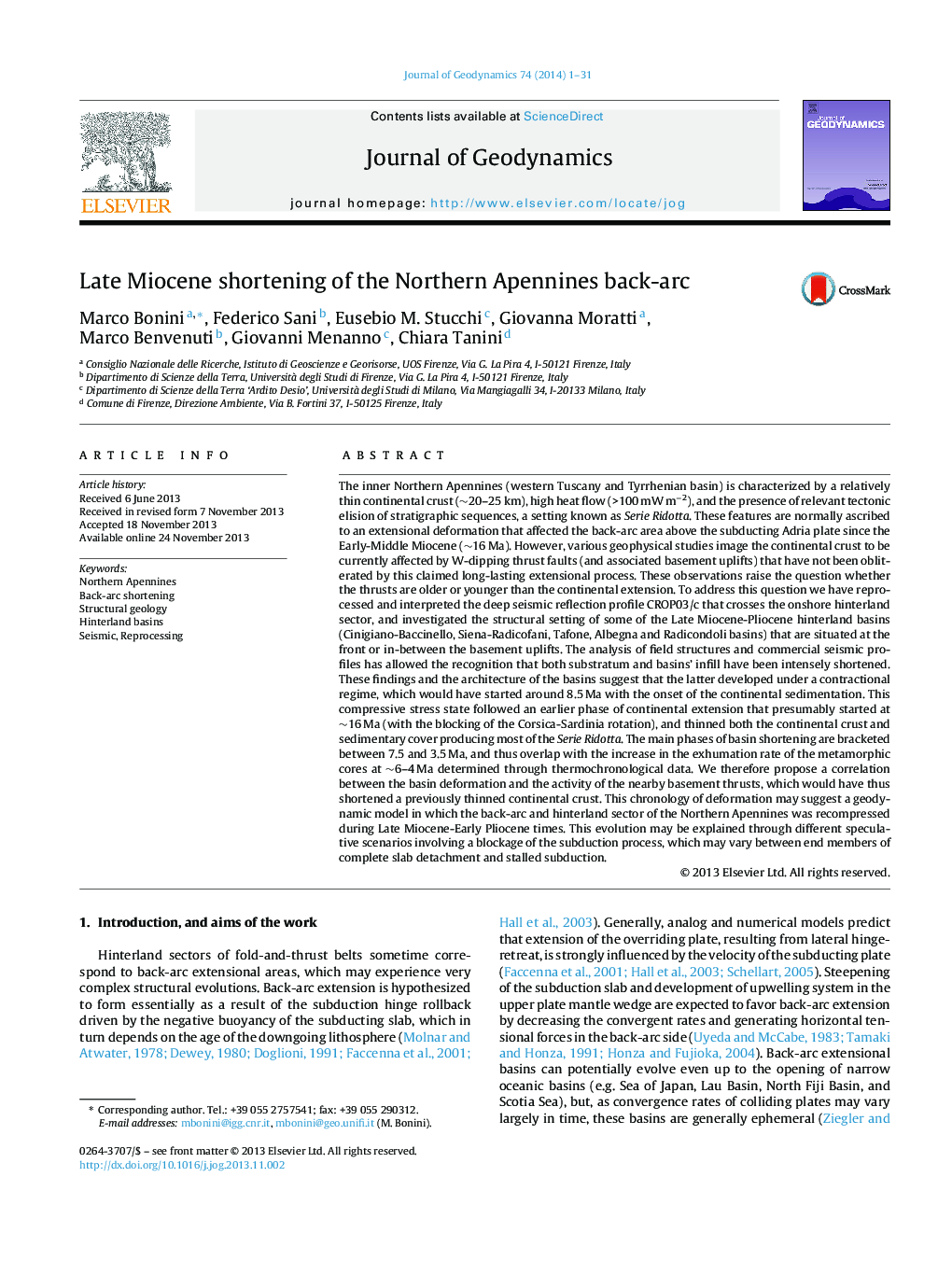| کد مقاله | کد نشریه | سال انتشار | مقاله انگلیسی | نسخه تمام متن |
|---|---|---|---|---|
| 4688172 | 1635775 | 2014 | 31 صفحه PDF | دانلود رایگان |
• Field and seismic studies suggest that hinterland basins have been intensely shortened.
• Compression followed a phase of continental extension that started at ca. 16 Ma.
• The back-arc area was shortened during Late Miocene to Early Pliocene.
• Various forms of subduction blockage may explain this evolutionary model.
The inner Northern Apennines (western Tuscany and Tyrrhenian basin) is characterized by a relatively thin continental crust (∼20–25 km), high heat flow (>100 mW m−2), and the presence of relevant tectonic elision of stratigraphic sequences, a setting known as Serie Ridotta. These features are normally ascribed to an extensional deformation that affected the back-arc area above the subducting Adria plate since the Early-Middle Miocene (∼16 Ma). However, various geophysical studies image the continental crust to be currently affected by W-dipping thrust faults (and associated basement uplifts) that have not been obliterated by this claimed long-lasting extensional process. These observations raise the question whether the thrusts are older or younger than the continental extension. To address this question we have reprocessed and interpreted the deep seismic reflection profile CROP03/c that crosses the onshore hinterland sector, and investigated the structural setting of some of the Late Miocene-Pliocene hinterland basins (Cinigiano-Baccinello, Siena-Radicofani, Tafone, Albegna and Radicondoli basins) that are situated at the front or in-between the basement uplifts. The analysis of field structures and commercial seismic profiles has allowed the recognition that both substratum and basins’ infill have been intensely shortened. These findings and the architecture of the basins suggest that the latter developed under a contractional regime, which would have started around 8.5 Ma with the onset of the continental sedimentation. This compressive stress state followed an earlier phase of continental extension that presumably started at ∼16 Ma (with the blocking of the Corsica-Sardinia rotation), and thinned both the continental crust and sedimentary cover producing most of the Serie Ridotta. The main phases of basin shortening are bracketed between 7.5 and 3.5 Ma, and thus overlap with the increase in the exhumation rate of the metamorphic cores at ∼6–4 Ma determined through thermochronological data. We therefore propose a correlation between the basin deformation and the activity of the nearby basement thrusts, which would have thus shortened a previously thinned continental crust. This chronology of deformation may suggest a geodynamic model in which the back-arc and hinterland sector of the Northern Apennines was recompressed during Late Miocene-Early Pliocene times. This evolution may be explained through different speculative scenarios involving a blockage of the subduction process, which may vary between end members of complete slab detachment and stalled subduction.
Journal: Journal of Geodynamics - Volume 74, March 2014, Pages 1–31
